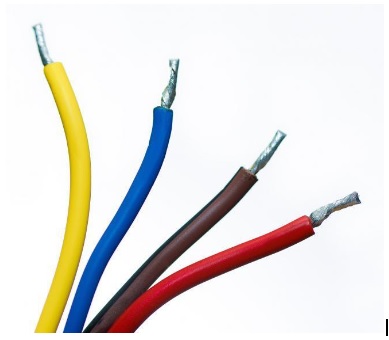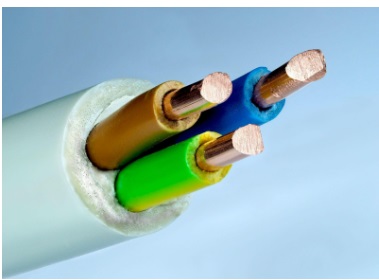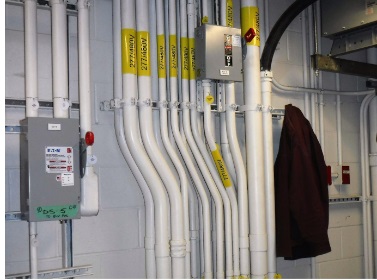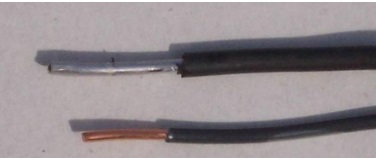It is essential to know the different types of wiring used in domestic installations And it is also relevant to have a minimum knowledge of how each type of cable affects the most common domestic circuits: lighting circuits, connections with household appliances, etc.
So if you plan on doing some repair in your home, and you want to know the different types of cables you should buy, then this article is for you.
House wiring types
The different types of cables used in domestic installations are classified according to a series of properties. When choosing a cable, it is important to take into account all these properties in order to find the cable that best suits each situation:
- Material: there are many materials used in the manufacture of electrical conductors, such as copper, aluminum, iron, gold, and others. Each material has its own electrical properties, so each type is used in different circumstances.
- Size: it is very important to use the optimum cable size for each circuit, to avoid wasting or lacking material. For example, when dealing with high power circuits, such as those feeding large appliances, we need larger cables.
- Capacity: related to the previous property, we have the capacity. This refers to the current or amperage capacity that a given conductor can withstand. As with size, finding the correct capacity for each circuit is crucial.
- Year of installation: depending on the year of installation of your electrical system, the type of wiring will be of one type or another. This is because over the years, electronics have been evolving and improving, so we no longer use the wires that were installed in the 80s.
The importance of making a good choice of cable lies in the fact that each circuit is different. Therefore, it is not advisable to use the same cable for a lighting system as one to power an electric oven. Just as, we do not charge the cell phone with the computer charger.
1. Non-Metallic Sheathed Cable (NM or NMC)
Non-metallic cable, also known as NM or Romex cable, is one of the most widely used cables for constructing domestic electrical installations.
It consists of insulated copper conductors wrapped in a plastic sheath, usually with white outer insulation and different colored conductors for the hot, neutral and ground wires.
NM cable is suitable for general purpose domestic wiring, including sockets, switches and lighting circuits. Its great versatility is what makes it one of the most widely used cables in residential installations.

2. Armored Cable (AC)
Armored cable, also known as AC cable, consists of insulated conductors enclosed in a flexible metallic armor. AC cable is available with conductors of various sizes and is commonly used for branch circuits and home power wiring.
It is often used in areas where physical protection is required or in exposed or unfinished areas where wiring may be damaged. Hence, its flexible armor.
In certain areas, the electrical code states that this type of cable should be used before NM. This is because it offers greater protection to the circuit and can be better at avoiding electrical faults.
3. Conduit Wiring (THHN or THWN)
Conduit wiring consists of running individual insulated conductors (THHN or THWN) through metal or plastic conduit. It provides excellent protection against physical damage and is commonly used in residential, commercial and industrial environments.
The main use of these is to provide increased protection and insulation of the cables, to prevent damages. And also, to prevent possible fires and accidents.
It is important to mention that there are several types of cables belonging to this category: rigid metal conduit (RMC), intermediate metal conduit (IMC), electrical metallic conduit (EMT) and some others.
4. Aluminum Wiring
Although not as popular as copper wiring, aluminum wiring was used in residential wiring during the 1960s and 1970s. It is still found in some older homes, but its use has declined due to concerns about oxidation and potential fire hazards.
Homes with aluminum wiring must have adequate connections and proper maintenance to mitigate potential problems. In addition, it is essential to follow safety guidelines and local electrical codes when working with this type of wiring.
5. Special types of cables
Finally, in domestic electrical installations there are some special types of cables, which have very specific functions: audio cable, data cable, coaxial cable and URD cable.
Each of these has a different and very specific function, let’s see it:
- Audio cable: a type of cable designed to carry audio signals, such as those from music players, microphones, speakers, and other audio devices.
- Data cable: a cable designed to carry digital signals, between electronic devices. Data cables are commonly used for connecting devices such as computers, printers, external hard drives and peripherals.
- Coaxial cable: is a type of cable consisting of a center conductor surrounded by an insulator, a metal shield and an outer jacket. This design provides a high capacity to transmit high frequency signals, such as those used in cable television.
- URD cable: is a type of electrical cable designed to be buried underground in residential electrical installations. These cables are designed to withstand subway conditions and are usually protected by a polyethylene or PVC jacket.
- UF cable (Underground Feeder): is designed for underground electrical wiring applications, commonly used for outdoor projects like lighting and supplying power to structures or fixtures buried in the ground. It features moisture-resistant insulation, a bare grounding conductor, and is approved for direct burial.
Types of domestic electrical circuits
Depending on the type of electrical circuit in question, one type of cable or another must be used. So below, we will explain what are the types of circuits and what cables they use:
-
- Lighting circuits: often use non-metallic sheathed cable (NM or Romex) with 14 or 12-gauge copper conductors. This type of cable is suitable for low-power lighting loads.
- Kitchen circuits: typically use the same NM or Romex wire as lighting circuits. Although, circuits for high power appliances, such as furnaces, may require larger 8 or 10 gauge copper conductors and may use a different type of wire known as armored cable (AC).
- Bathroom circuits: these outlet circuits typically use NM or Romex wire with 12 or 14 gauge copper conductors. For this type of wiring, it is very important to properly insulate the wires.
- HVAC (Heating, Ventilation, and Air Conditioning) circuits: these circuits can use a range of wiring types and sizes, depending on the specific equipment and local codes. It’s common to see NM, AC, or MC cable used for these circuits.
- Outdoor circuits: these circuits require special consideration due to exposure to the elements. They often use underground feeder (UF) cable for buried wiring and weatherproof conduit for above-ground installations.
FAQ about residential house wiring
Below, we are going to answer a series of questions about electrical home wiring. It is highly recommended that you read them all if you are thinking of doing any home repairs on your own, as it is possible that some answers may escape you.
What type of wiring is most commonly used in homes?
The most common type of wiring used in homes is Romex or Non-Metallic (NM) Cable. This type of domestic wiring consists of insulated copper conductors enclosed in a flexible plastic sheath.
Romex is widely used for general household wiring, such as electrical outlets, lighting, and basic residential electrical circuits. It’s popular because it’s relatively easy to work with, cost-effective, and meets the electrical needs of most homes.
Are houses wired in series or parallel?
Houses are wired in parallel circuits, where each electrical device connects directly to the power supply independently. This setup ensures that if one device has a problem, it won’t affect the operation of others, promoting safety and convenience in residential electrical systems.
What is considered outdated wiring?
This depends on the type of wiring your installation uses, but what is considered outdated is a 40 year old installation. We do not recommend that you take this value as an exact value, but rather as a reference.







